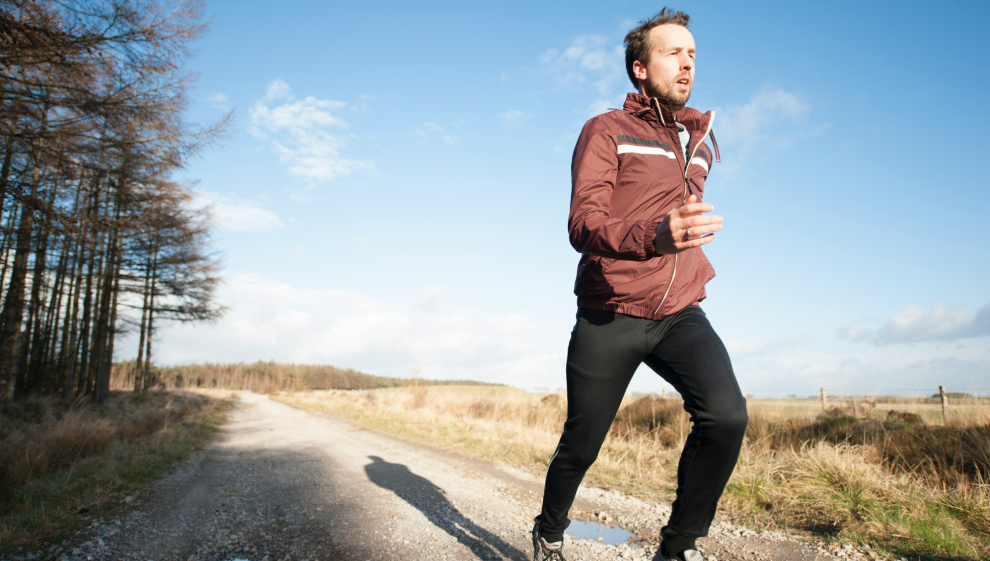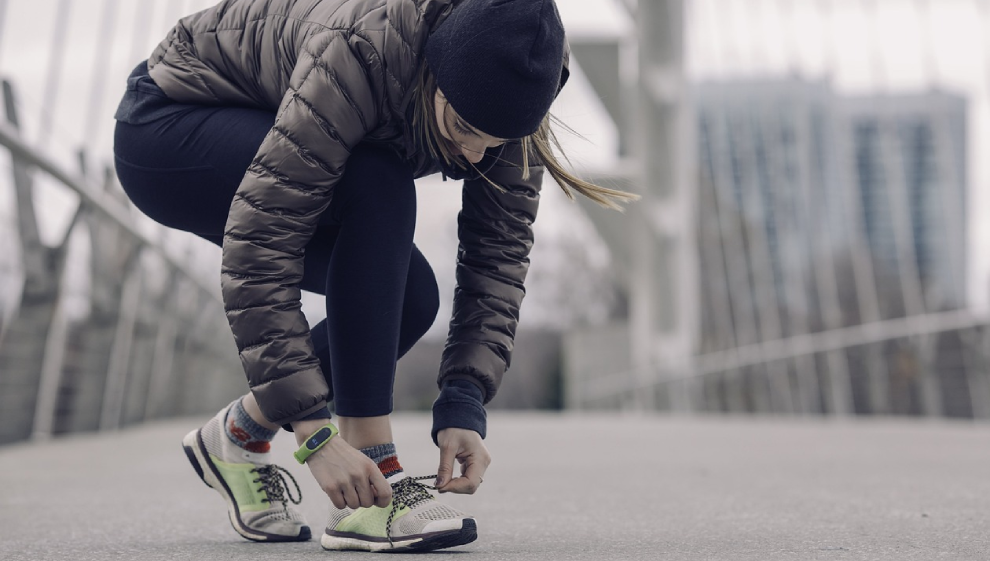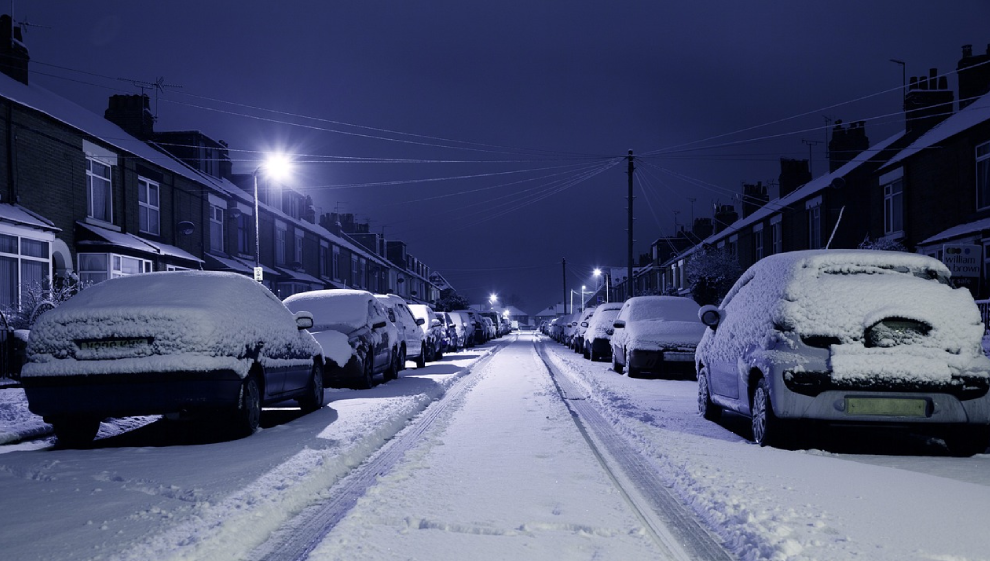The right way to exercise in winter
- Overview
Key takeaways
- For most people in the UK, it will never get “too cold” to safely exercise outdoors
- Exercising during winter can help us fight colds and infections
- We burn more calories exercising in the winter than we do in the summer
- Prioritise layering your kit with breathable garments to stay warm
- Quickly warm up before you leave to get the blood flowing
- The cold weather can increase appetite, making small dietary changes necessary
Are there added health benefits?
Yes and no.
There’s little evidence to suggest that working out in the cold is any better for you than working out in warmer temperatures.
What it can do is improve our ability to fight infections, colds, and viruses during the winter months. If you continue exercising outdoors, you may find that if you do get ill, it’s not as severe as you expected. This is because exposure to the cold is linked with bolstering our immune system.
Do we burn more calories in the winter?
We do.
If you did the same outdoor workout in the summer and winter, you’d find that aside from sweating out water weight, you burn more baseline calories in the winter.
This happens because on top of keeping us moving, our body is also working hard to regulate our core temperature. Another important factor is that we typically need more energy to power cold muscles than we do warm ones.
You may also find that you burn more calories per day during the winter because you can exercise for longer than you can during the hot summer months. Athletes and amateurs alike will confirm that exercising during the height of summer is not much fun.
How does cold air affect our lungs?
Exercising during winter means flooding our lungs with a tonne of cold air. This can cause the bronchial tubes in the lungs to constrict, leading to a feeling of tightness in the chest and potentially causing breathing difficulties for individuals with asthma or similar respiratory conditions.
Because cold air is often dry, exercising at a high intensity during the winter can lead to irritation of the windpipe, coughing, or a sore throat.
Some people even experience a condition called exercise-induced bronchoconstriction (EIB). This can cause wheezing and shortness of breath during or immediately after physical activity.
Does it make our lungs stronger?
When you breathe in cold air, your body must work harder to warm and humidify it before it reaches your lungs. This increased workload can lead to stronger respiratory muscles, including the diaphragm and intercostal muscles.
My chest burns when I run in the winter
This is caused by freezing cold air hitting our airway and respiratory system. The good news is there are plenty of things you can do to help:
- Breathing through your nose instead of your mouth
- Wearing a scarf or snood
- Focus on slower, deeper breathing
- Slow down
- Aim for longer, not faster
- Wear a mask type face covering
The importance of layers
Layering is an essential part of winter exercise. When done properly, layering helps regulate our body temperature and prevent chaffing. Wearing multiple layers means that the heat we generate gets trapped for maximum insulation and warmth.
How do I layer?

The first layer of your kit should be a moisture-wicking material that draws sweat away from the body to keep you dry. Consider a t-shirt or long sleeve garment made from material like polypropylene or a polyester/nylon blend.
Your middle layer is all about insulation. The best middle layers are made from thicker fabric and come in the form of a jumper, insulated jacket, or fleece.
The outer layer is your first point of contact with the cold, rain, wind, and snow.
Should the material of my kit change?
As mentioned above, prioritise lightweight, moisture-wicking fabrics that draw sweat away from the body.
These fabrics are thin and breathable, meaning they allow sweat to pass through. This prevents perspiration from lingering on your skin which is what causes chaffing and irritation. Always avoid working out in heavier fabrics like cotton.
Shedding layers
As you heat up, you can shed a layer as and when required to prevent overheating. Many runners will start a race wearing more than they finish it with.
Layering also ensures adaptability in unpredictable weather conditions. If it suddenly brightens up, you can take that insulative middle layer off and go with a t-shirt and jacket combination. Ensure you’re opting for lightweight garments wear possible to make carrying them easier.
How long does it take to “get warm”?
“Getting warm” refers to the time it takes to go from feeling cold to feeling warm in the outdoor temperature.
This varies from person to person, as factors like bodyweight and fitness level will play a part. Typically though, you can expect to warm up within five minutes of walking, running or cycling outdoors. The more intense the exercise, the quicker you’ll warm up. This is because intense exercise raises our heartrate faster than low-intensity exercise.
To make stepping out into the cold easier, follow our quick 5-minute warmup in the warmup section of this page.
Adapt your kit and accessories
We’ve already talked about clothing and how making smart choices can help make exercising in the cold easier, but what about gadgets and accessories?
See below for some innovative bits of kit that can help make exercising in the cold a little bit easier:

- Headlamp
- Torch
- Snoods and neck warmers
- High visibility strips
- Woolly hat
- Gripper shoes
- Insulative socks
- Gloves
- Underfoot hiking crampons
- Reflective armbands
Dress bright and take care in the dark
When the nights draw in, staying safe and seen at all times is essential.
To maximise visibility for cars, cyclists, and other pedestrians, consider utilising high-visibility and reflective gear. These come in the form of high-visibility jackets, hats, and reflective strips that you wrap around your arms or ankles.
Avoid trails after dark and always let someone know where you’re going if you’re headed offroad. If you’re concerned about the terrain underfoot, wearing a headlamp or torch can help light your way.
Should I fuel differently during the winter?
Practising good nutrition and eating a balanced diet is just as important during winter.
Aim to eat a well-rounded diet that’s rich in lean protein sources, healthy unsaturated fats, and complex carbohydrates.
If you’re exercising heavily or training during the winter, you may want to adjust your macros and eat more carbohydrates. Continue to prioritise protein, as this is a vital macronutrient for muscle repair and growth.
I get hungrier during the winter
Many people report feeling hungrier during the winter. This is because our core temperature drops slightly which sends a signal to our brain to increase our appetite.
Concentrate on eating whole meals in a way that suits you and your routine. Avoid snacking and skipping meals, especially on workout days.
Hydration information
Hydrating during winter is vital. Don’t be fooled into drinking less because you don’t feel thirsty and aren’t sweating buckets.
Aim to stay well-hydrated before, during, and after your outdoor workouts. Sipping warm fluids like herbal tea or lukewarm water to help maintain core body temperature can help warm you up before you set off.
Drinking an electrolyte-replenishing drink can also be beneficial for longer sessions where your sugar and salt levels will drop.
Will my water bottles freeze?
When things get really cold, there is a danger that your water bottles may freeze during a workout.
To keep this from happening, consider picking up some insulation wraps or buying a twice-insulated water bottle.
Warming up and why it matters
Warming up before exercise is always essential because cold muscles are more prone to injury. During the winter, this is even more important because the cold temperature outside amplifies this risk.
A warmup is all about getting the blood flowing into our muscles. If we’re already warm, that shock of the cold when we step out the front door won’t feel as bad.
What does a good warmup look like?
This all depends on the exercise you’re doing. Lots of people make the mistake of doing the same warmup no matter what they’re doing.
A good warmup will activate the muscles most important for your activity. For instance, a runner should concentrate on stretching the legs, because they do the bulk of the work. If you’re climbing, you’re going to use more of your arms, so concentrate on them.
A basic warm up
If you’re just looking to avoid the shock of the cold when you step outside, repeat the exercise below twice before you leave:
- Jog on the spot (30 seconds)
- Forward arm rotations (15 seconds)
- Jumping on the spot (30 seconds)
- Star jumps (15 seconds)
- Backward arm rotations (15 seconds)
What to avoid in winter?
Swimming in open water during winter can be incredibly dangerous. This is because freezing cold water can cause the body to go into shock, which can incapacitate our muscles and leave us unable to move.
Additional risks include hypothermia, cramps, worsening symptoms for asthmatics, skin irritation, and a potentially dangerous body temperature drop when you get out of the water.
If you’re a keen open water swimmer, consider swimming in a heated pool until things start to warm up outside.
How cold is too cold?

Most of us live in a climate where it will never get too cold to exercise. Things might get uncomfortable in January and February, but it’s usually perfectly safe to continue running, walking, and biking outdoors.
For others, legitimate factors like frostbite and windchill need to be considered. Thankfully, it’s generally considered safe to exercise in temperatures as low as -20 degrees Celsius if you’re layered up and warm when you start.
There’s always the gym
If you’ve tried all the above and still can’t face working out in the cold, there’s always the gym.
With over 110 heated swimming pools nationwide and an incredible array of premium quality equipment for you to use, there’s no better place to stay fit and healthy during winter.
Last updated Thursday 16 November 2023
First published on Monday 31 January 2022

